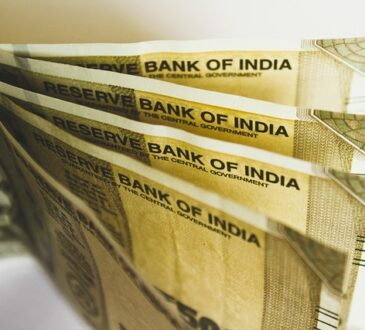[HANOI] South-east Asian stocks and currencies fell after Asian emerging nations were given some of the biggest tariff increases by US President Donald Trump. Vietnamese shares tumbled.
Vietnam’s main stock index slid as much as 6.2 per cent, heading for its biggest one-day drop in more than four years, while equities in Thailand, the Philippines, Malaysia and Singapore also declined. The Thai baht weakened as much as 0.8 per cent against the dollar, and the Vietnamese dong and Malaysian ringgit also dropped.
South-east Asian assets slipped after the region was hit particularly hard by the reciprocal tariffs announced by Trump on Wednesday. He said the US would place a 46 per cent tariff on Vietnam’s exports, 36 per cent on Thailand’s, and 32 per cent on Indonesia’s. The region’s largest trading partner – China – was heavily targeted, with Beijing now facing a cumulative 54 per cent tariff.
“Asean economies will face significant headwinds in next few months due to the direct impact of sharp spikes in the US tariff rates on their exports as well as the indirect impact of the shock to global growth,” said Homin Lee, a senior macro strategist at Lombard Odier in Singapore. “Whether or not the governments in the region can lower the tariff rates meaningfully through their bilateral negotiations with the Trump team remains to be seen.”
South-east Asian economies are highly susceptible to US tariffs, with America among the top two main trading partners for Singapore, Vietnam, Thailand and the Philippines, according to International Monetary Fund data published in 2023. The region’s equities were already among the worst performers in the world this year.
Vietnam, which employed a charm offensive toward the Trump administration ahead of the announcement, failed to avert one of the largest tariffs announced by the White House. The country is among the world’s most trade dependent nations, with exports equivalent to nearly 90 per cent of economic output. It has the third largest trade surplus with the US, making it a prime target for tariffs.
BT in your inbox

Start and end each day with the latest news stories and analyses delivered straight to your inbox.
‘It’s not surprising to see panic selling as local investors only expected 10 per cent-to-15 per cent tariffs,” said Nguyen Anh Duc, head of institutional brokerage and investment advisory at SBB Securities Corp. “Margin lending balances of brokers is quite high and can make things worse. If stock prices plunge another 10 per cent, we may see margin call pressures.”
Singapore and Malaysian stocks trimmed earlier losses as the countries were hit with relatively light levies of 10 per cent and 24 per cent respectively. Singapore’s dollar rose against the greenback on Thursday, outperforming all emerging Asia peers. Indonesia’s financial markets are shut through April 7 for holidays.
“For Singapore, the application of minimum 10 per cent tariff rate is a bit of silver lining, but the negative shock will still be substantial as the city state’s goods trade is much larger than its economy,” Lombard Odier’s Lee said.
The cost to insure South-east Asian countries’ sovereign debt also climbed. Credit-default swaps tracking emerging Asia bonds widened by the most in 19 months, according to traders. The costs have jumped since February as investors grew more concerned about the impact of tariffs on the ability of borrowers in the region to repay their debt. Indonesia’s five-year contracts climbed to the highest since October 2023.
Markets are now waiting for any possible retaliatory response from tariff recipients, further adding to global trade tensions. China on Thursday said it firmly opposes the US tariff move and vowed to take countermeasures to safeguard its own interests.
A further uptick in trade tensions may heap additional pressure on Asian currencies. The Indonesian rupiah has slumped 2.8 per cent this year and last month fell to the weakest level since the Asian financial crisis in 1998.
Although the tariffs “will have an overall negative impact on foreign direct investments into the Asean region, it is important to highlight that each country has different economic drivers and investor bases,” said Gary Tan, a portfolio manager at Allspring Global Investments in Singapore. BLOOMBERG




